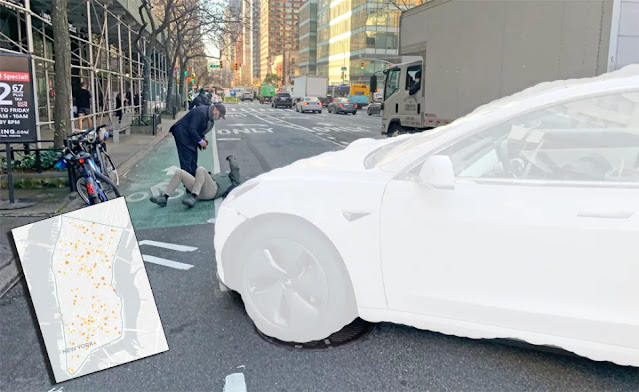Streetsblog is an excellent source of information about road and transit conditions, and city policies. One thing that makes it so good is that most of the posts are written from the perspective of people who actually walk, cycle and drive the city’s streets and ride its buses and trains. That, I believe, accounts for why I enjoy, and feel affirmed by, reading it: Streetsblog’s editors and contributors understand (and offer the data to confirm) that creating a safe, sustainable and affordable city isn’t a zero-sum game between the safety of cyclists and pedestrians and the interests of drivers. Rather, they support and explain the principle that when cyclists and pedestrians are safer, motorists can move about more efficiently—and safely.
As Gersh Kuntman reported, the first twelve days of congestion pricing in midtown and lower Manhattan—the most densely populated and commercially active part of New York City—has cut the number of crashes and injuries by half compared to the same time period last year.
That period included ten business days and a weekend, as it did last year. While that laudable decrease came after an “outlier” year in 2024, this year’s statistics nonetheless show a 48 percent drop in crashes and 27 percent decrease in injuries from 2023. Moreover, the 2025 numbers are even lower than those of the corresponding periods of 2021 and 2022, which were affected by the COVID pandemic.
 |
| Photo and photoshop by Gertz Kuntzman |
The explanation, according to Metropolitan Transportation Authority Policy and External Relations Chief John J. McCarthy, is basic math. “Seems logical that fewer vehicles, less gridlock and calmer traffic flow in the congestion relief zone would lead to a decrease in crashes and injuries,” he said.
And less-congested and safer streets are better for everyone who interacts with them, says Ben Furnas, Transportation Alternatives’ Executive Director. “One less crash can mean that a parent gets home to their kid, a worker reaches their job safely or a cyclist arrives unharmed,” he explained. (Italics mine.)
So, it turns out—as the title of Gertzman’s post announces—that the congestion-relief zone, as the area affected by congestion pricing is called, is actually a crash-relief zone. That sounds like a “win-win” situation.


